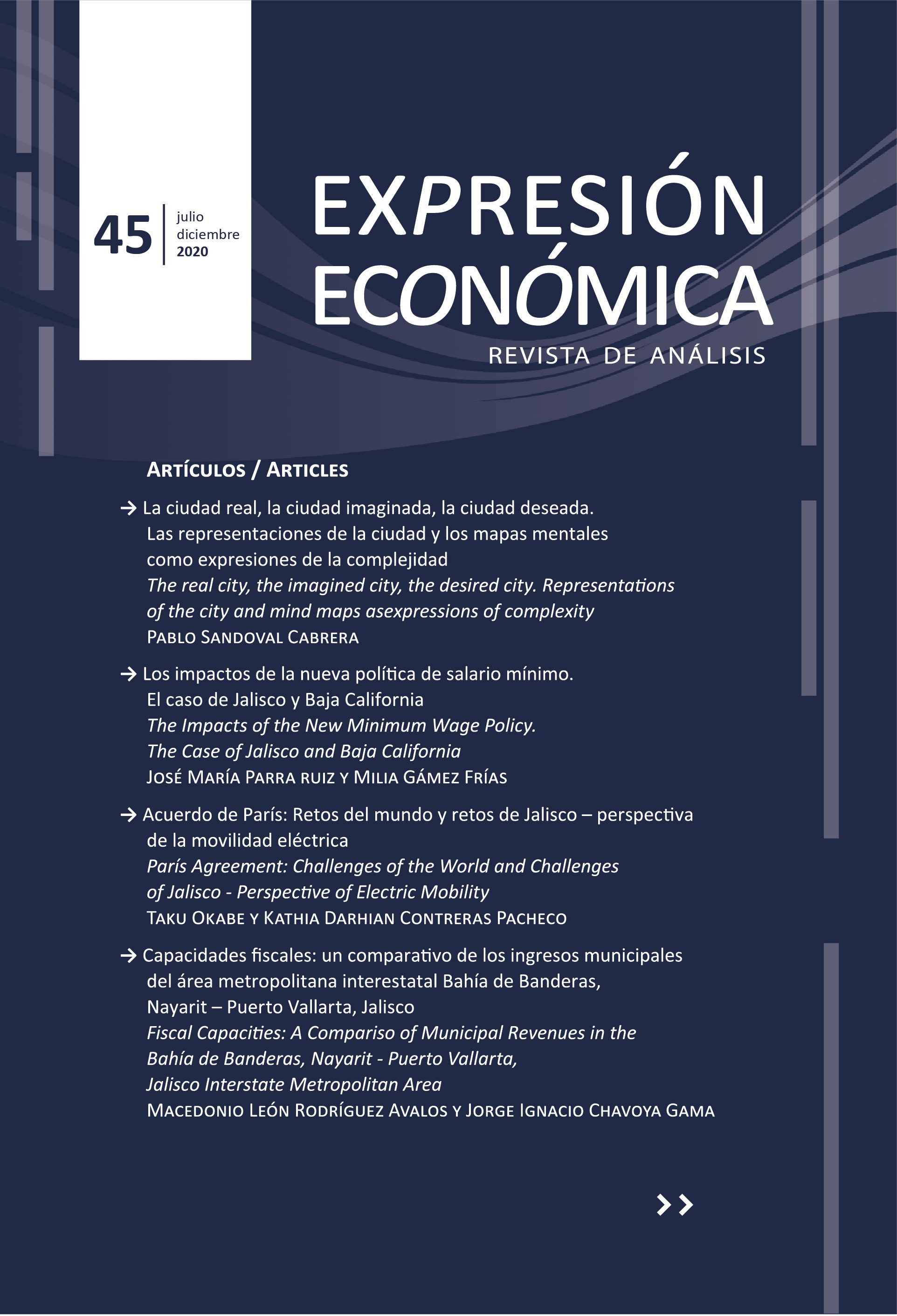The real city, the imagined city, the desired city. Representations of the city and mind maps as expressions of complexity
DOI:
https://doi.org/10.32870/eera.vi45.1007Keywords:
real city, imagined city, social perceptions , representationsAbstract
The work presented here constitutes a brief and initial essay which, in principle, represents an effort to enter the theoretical debate on the genesis of social perceptions, arguing in the light of existing theory that they are the product of a complex cognitive process in which consciousness and the social-cultural are intertwined, at various scales, in a relationship between the symbolic and the imaginary, in an interfacial framework of cognition of the subject trying to apprehend the image of the observed object (phenomenon), in its complexity, putting into play their experience, culture, social values and diverse capacities of perception, understanding, relationship and integration. In particular, it is interesting to highlight that its elaboration starts from the instituted, the underlying, the presupposed and the socially and symbolically constructed. From this origin, the different forms of individual and collective representation of the different phenomena that derive in the socio-cultural dynamics of cities are explained. After a brief theoretical analysis of what is defined as complexity in its relation to social perceptions, a task that is not simple and barely outlined in this essay, we move on to the description of one of the frequently used techniques for the subjective construction of the city, I mean the technique (or method) of mind maps. For this purpose, the work is divided into four sections. The first of them deals with the analysis of the theory of complexity, the imaginaries and their relationship with the construction of social representations. In a second section, the analysis of social representations is approached from the perspective of urban sociology and the existing literature on the subject of mind maps, starting with, perhaps, the first study published on it, from the pen by K. Lynch in the year 1960 and which is entitled “The image of the city.” Other authors are reviewed and the analysis of narrative literature is suggested as a culturally very attractive source on the subject under study. In this regard, and just as an example, the novel by Ítalo Calvino entitled “The Invisible Cities” is reviewed, which stands out as a highly creative literary exercise of subjective reconstruction of cities. In the third part of the work, the technical and methodological aspects related to the use of mental maps in urban research are reviewed. Among other things, the application of the technique, the selection criteria of the study universe and the method are highlighted, as well as the advantages and disadvantages of its application. The purpose of this section is to illustrate the process that occurs when individuals graphically represent the city. It undoubtedly combines cognitive and perception aspects, as well as sociocultural elements that end up producing a very diverse image of the city, very close to the processes of social anchoring and objectification / objectification, which Moscovici (1986) recognizes in the complex construction of social representations.
Downloads
Published
Issue
Section
License
Copyright (c) 2021 University of Guadalajara

This work is licensed under a Creative Commons Attribution-NonCommercial-NoDerivatives 4.0 International License.






